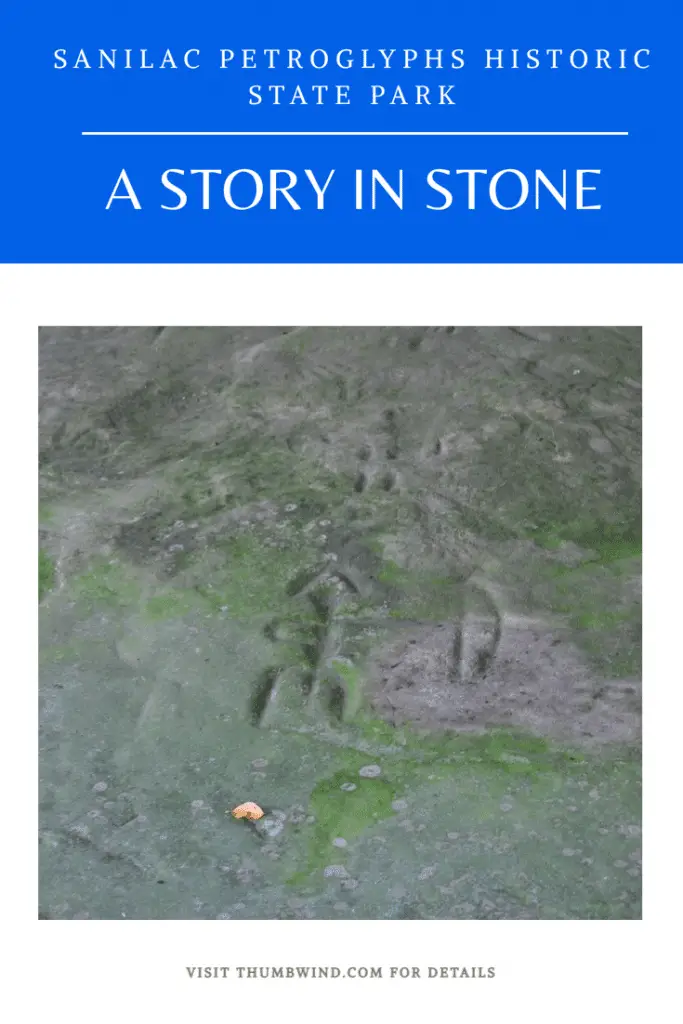
Let’s Cover This
History of the Sanilac Petroglyphs Near Cass City
The petroglyphs were donated to the State of Michigan by the Michigan Archaeological Society and managed by the DNR since 1971. The Sanilac Michigan petroglyphs are the largest known group of ancient rock carvings in the state. Listed in the National Register of Historic Places, the park covers 240 acres along the Cass River near Cass City in Michigan’s Thumb region. Stone tools and pottery found on the petroglyphs site on the Cass River floodplain show tribal groups have occupied the area periodically throughout the last 8,000 years. The petroglyphs were likely carved within the last 1,400 years, with some possibly created in more recent centuries.
One of the Most Visited Sites in the Thumb
The Sanilac Petroglyphs are one of our most visited attractions in the Thumb region. Attracting thousands of visitors each year. The historic park has been featured on the PBS television series Michigan Under the Radar.
The Sanilac Petroglyphs: A Sacred Site
The Sanilac Petroglyphs are believed to be over 1,400 years old. They represent art, a spiritual narrative, and teachings passed down through generations. The site has been visited by countless Native Americans, including tribal elders, who consider it a place of reflection, learning, and connection. These carvings are Michigan’s earliest form of recorded history, offering a glimpse into the lives and beliefs of the people who created them.
Interpreting the Petroglyphs
The petroglyphs are more than mere carvings on stone; they are tools for knowledge transfer. One notable carving, referred to as “The Archer,” symbolizes the importance of knowledge transference and lifelong learning. In the Native American worldview, each person is both a teacher and a learner, with an obligation to guide others and uphold cultural wisdom. This concept emphasizes a mentorship model, where stories and lessons are passed down through personal interaction.
Sanilac Petroglyphs To Be Co-Managed By Saginaw Chippewa And State Of Michigan
On Monday, December 2, 2019, Saginaw Chippewa Tribal Chief Ronald F. Ekdahl was joined by the Department of Natural Resources representative Sandra Clark to sign a ground-breaking Memorandum of Understanding.
This establishes the tribe’s co-management of the Sanilac Petroglyphs Historic State Park, with the State of Michigan’s Department of Natural Resources. This will mark the first state/tribal co-management of a state park in Michigan.
“This partnership is a major step forward in strengthening the authentic interpretation of the Sanilac Petroglyphs site, which speaks to humankind’s connections to nature and the earth,” said DNR Director Daniel Eichinger. ”We hope this collaboration will serve as a model, both within and beyond Michigan, of respectful, inclusive, equitable management practices that protect important historic resources while helping people understand their relationship to them.”
“This site is special and sacred to the Anishinabe. It clearly indicates the unique origins and history of the Saginaw Chippewa Indian Tribe. We know our Ancestors were thinking of us when they left the lessons in stone,” explained tribal elder Bonnie Ekdahl. “The Memo creates a relationship that ties us to this beautiful site and marks an important step of acknowledgment and inclusion of the tribe. I am very thankful and proud of the team at the Ziibiwing Center who preserved and carried the vision for over 15 years, and it is especially incredible to know my son is involved with the final step, miigwetch.”
Sanilac Petroglyphs, or ezhibiigadek asin (written on stone)

Images and information from the preservation of the petroglyphs project were featured on the 2018 Michigan Archaeology poster. The free poster is available from the State Historic Preservation Office or at the Ziibiwing Center of Anishinabe Culture & Lifeways.
Guided tours of ezhibiigadek asin (Sanilac petroglyphs) are available in the summer months. Learn more about Sanilac Petroglyphs Historic State Park on the DNR website. To see the 2018 Michigan Archaeology poster featuring the petroglyphs and the LiDAR survey, visit Michigan.gov/Archaeology.
FAQ: 5 Questions About The Petroglyphs
What are the Sanilac Petroglyphs?
Why are the Sanilac Petroglyphs significant?
Can visitors see the carvings up close?
What do the carvings depict?
How can I learn more about the Sanilac Petroglyphs?
Other Things to Do Near Sanilac Petroglyphs Historic State Park
- 10 Free Things to do in Michigan’s Thumb
- Port Sanilac Lighthouse – Beacon for the Shore of Michigan’s Thumb
- Indian Trails of Michigan’s Upper Thumb
- Lighthouses of Michigan’s Upper Thumb
- The History of the Mysterious and Remote Charity Island





